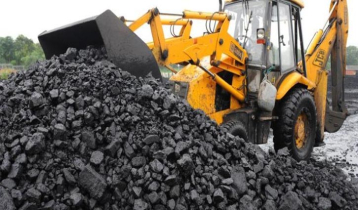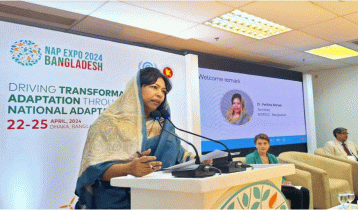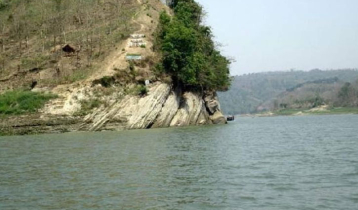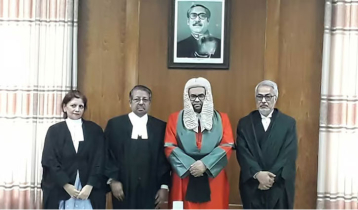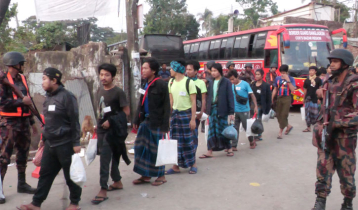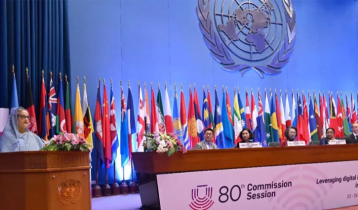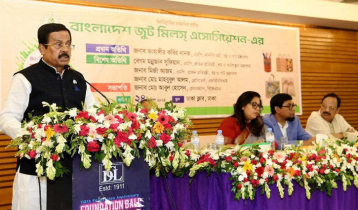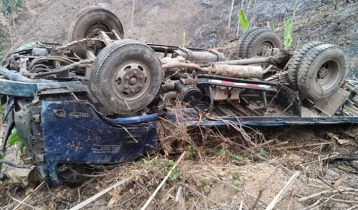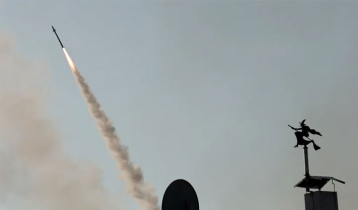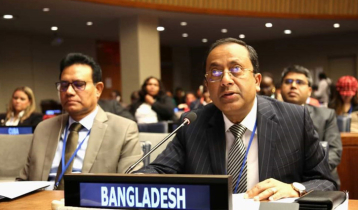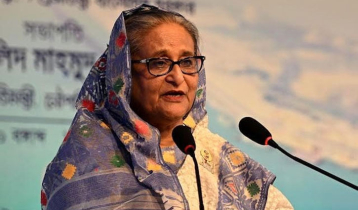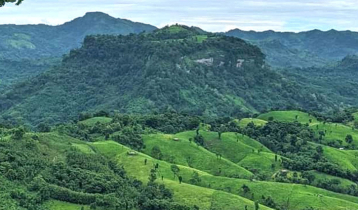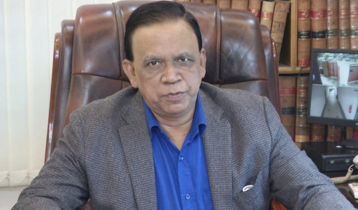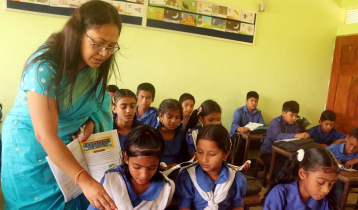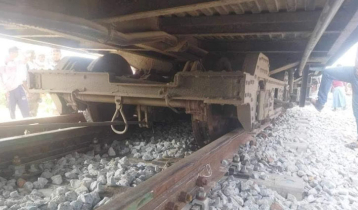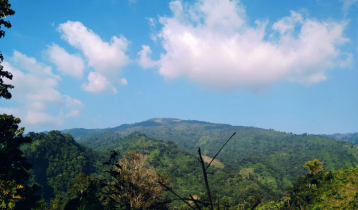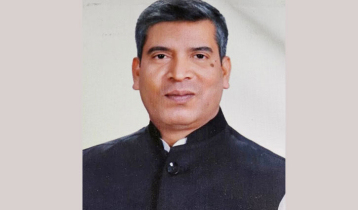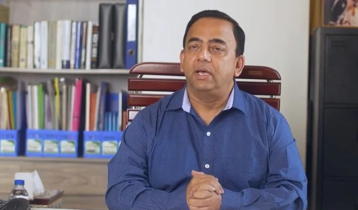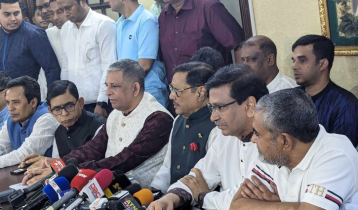Earthquakes- A forewarning for beautiful Bangladesh
Monty Siddique || risingbd.com
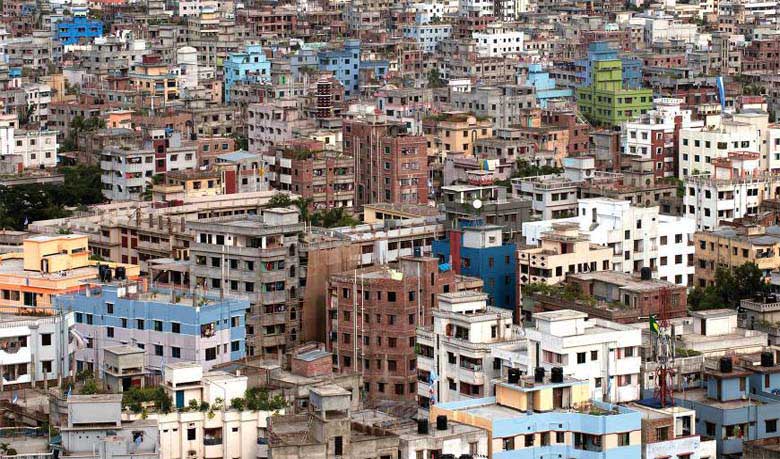
By Monty Siddique: Latest Hollywood science fiction and science-related blockbusters- projected on the big screen with modern stereophonic and special effects – regularly draw my family and my extended family and me as a captivated audience.
It’s probably a trait inherited from my late father, who used to frequently treat us with outings to the cinema, showing newly released Hollywood adventure and disaster movies.
You will be surprised how educative these movies can be, though some scenes can be said to be bordering on the realms of fantasy.
Films shown at the cinema in the recent past here in the United Kingdom include 2012 (Sony Pictures/Columbia Pictures), Pompeii (Summit Entertainment) and Noah (Paramount Pictures). These have, essentially, an entertainment objective and the computer-aided photography also creates a virtual reality, which allows you to imagine what the actual event could be like as a real life experience. Films shown in 3D add to the realism.
You become more spellbound, if the spectacle is witnessed on Great Britain’s biggest movie screen, namely the BFI Imax, on London’s South Bank. The screening, here, of the science fiction extravaganza, Interstellar (Warner Bros. Pictures), not long ago, dragged us in as mesmerised spectators. Given the popularity of the BFI Imax, it is of no surprise that booking, well in advance, is essential to be assured of a seat.
The latest earthquake disaster movie, San Andreas (Warner Bros. Pictures), released here in the UK, in May 2015, has attempted to project a science of prediction of earthquakes with awe-inspiring special effects depicting cataclysmic catastrophes. Of course, the focus, here, was on the San Andreas Fault in California. In many ways, the theme and computer-assisted imagery were similar to those in the film, 2012. Anyhow, I and some (I assume) of my family members, managed to lose ourselves in vivid imagination.
This is, however, where we part company from the fictitious world of films and connect our thoughts with the gigantic forces of nature that shape our world – the Earth.
Continents-in-continuous-movement or Continental Drift, as a theory, has been around for over a century. The phenomenon was later explained by the discovery of Plate Tectonics. It is the relative movements of the tectonic plates, constituting the Earth’s exterior solid shell, which facilitate continental movement and, in turn, generate forces which induce volcanic activities and earthquakes.
A scene extracted from Old Dhaka’s Lakhshmi Bazar showing structures of heritage sites susceptible to collapse during an earthquake. Photograph supplied by Banglar Chokh after the 25 April earthquake in Nepal.
The Indian Plate has been drifting northward towards the Eurasian Plate for millions of years to join therewith and form the South Asian sub-continent. It is the crashing of the two plates that formed the Himalayan mountain range. Where the plates slide relative to each other is where the fault line lies. There is also a Burma Plate in the region of Southeast Asia. Plural fault lines encompass Bangladesh.
According to ‘Earth Observatory of Singapore’ website, active faults have been revealed across the India-Burma plate and lie along the Chittagong-Tripura zone. The latter extends beyond the shore and could, in the event of an offshore tectonic plate push, potentially cause a Tsunami to occur.
Over the past few years, Bangladesh has experienced several jolts from earthquakes which had their epicentres well outside Bangladesh. According to newspaper reports, the strongest of them was felt in 2011 and was recorded at 6.8 on the Richter scale.
The Nepal earthquake of April 2015, which measured 7.8 on the Richter scale, dissipated its energy far afield. In Bangladesh, the intensity of the tremors was measured at around magnitude 5. Additionally, several after-shocks ensued.
The very latest earthquake (4 January 2016), with its epicentre in the Indian state of Manipur, has rattled Bangladesh, where buildings swayed. On the Richter scale, the ‘quake was measured at 6.7.
The county of Kent, here in the UK, felt a seismic shaking on 22 May 2015 at 2:52 am. The British Geological Survey (BGS) recorded the ‘quake at 4.2 on the Richter scale. The vibrations lasted for about 3 to 5 seconds and were enough to generate fear amongst inhabitants.
The UK experiences about 200 earthquakes every year, according to BGS, but, because they are of low intensity, they are hardly felt by us. Then again, you never know if and when the big one will strike!
According to the Mirror website, the UK’s Home Counties are sitting on deep underground fault lines, which could trigger a destructive earthquake.
Earthquakes will always be with us, as a consequence of Continental Drift. The point of the matter is, though, how we manage to adapt ourselves to alleviate the damage and suffering in their aftermath.
There could come a time in the future, when earth scientists conquer gravity and construct islands floating above the surface of earth – mirroring the concept depicted in the movie Avatar (20th Century Fox). But such a world of ours may be centuries away.
Bangladesh is one of the most densely populated nations on earth, with an estimated population of about 160 million occupying a land mass close to 57,000 square miles. On the other hand, it is an attractive lush green nation, which can be modernised to unveil its embedded rich history and archaeological heritage sites.
Over the past couple of decades, there has been a continuous and steady migration of people from the villages to the big cities, namely Dhaka and Chittagong, in search of jobs. The North and southern half of Bangladesh have not only borne the brunt of global warming and depleted water flow but have also been devoid of infrastructure development commensurate with the local needs. Naturally, much of the displacement of labour has occurred from these regions.
Dhaka has grown very rapidly into a sprawling mega city. Housing construction has proceeded, somewhat, haphazardly. In the 1980s, much of Shyamoly, Panthopot, Hatirpool, Mirpur etc. were swampy lands. The marshy terrain was filled to facilitate erection of high rise buildings, many of which are too close to each other and contiguous with the main street or road. In some cases, adjacent buildings appear to almost abut each other.
A cursory glance over much of the horizon of Dhaka would reveal myriad seemingly dilapidated buildings, giving the impression that they could collapse at any time. Of course, this is only a visual observation, accentuated by damaged plasterwork, which may signal a false alarm. They may still retain structural integrity.
What is often heard from geologists and architects is that it is not the earthquakes, but disintegrating buildings, which kill people. So, one is tempted to ask a series of pertinent and probing questions.
Have the building regulations included inter alia steps to render them earthquake resistant? Have the building regulations been strictly adhered to? Have stringent measures been undertaken to oversee that standard materials have been used, correct procedures have been adopted and no corruption has played any part in all of this? Otherwise, a single oversight could be disastrous. Maybe I am being over-cautious, but is it not better to be safe than to be sorry?
Does each building have available, onsite, a blueprint of its construction details and its plan? Are emergency evacuation drills performed on a regular basis? Are buildings subjected to regular structural surveys? Are there enough emergency exits?
During an earthquake, the ground can move both vertically and laterally, thereby moving structures built on them, likewise. One solution, according to civil engineers, is to separate the structures from the foundations in a manner such that there is relative movement between the two to relieve the stress, during an earthquake. Also, the buildings need to be lighter so as to reduce the lateral loads.
Existing structures, non-resistant to seismic shocks, could be retrofitted, viz. modified, to render them at least partially resistant to earth tremors. Engineers in Bangladesh are, of course, fully aware of this.
My favourite joyride in Dhaka is being driven through the Ramna area, where trees arch over impeccably maintained roads to provide a pleasing ambiance that can be mistaken for any modern European city. Over the past two decades, erection of modern edifices and cutting edge architecture has presented Dhaka’s skyline with much aesthetic appeal. But, God forbid, if a major earthquake struck Bangladesh, would these breathtaking buildings survive?
All the country’s best universities, colleges, schools, hospitals, residential houses, clinics, hotels, restaurants, amusement centres, shopping arcades etc., have clustered in and around Dhaka. Patients from other districts always long to be treated in Dhaka. Ambitious science students endeavour to get admitted in Dhaka’s BUET. The entire central government administration and supreme judiciary are ensconced in Dhaka. It is akin to putting all the eggs in one basket.
It has become increasingly difficult to keep more than one scheduled appointment in Dhaka because of insurmountable traffic jams. Congestion on Dhaka’s roads has become a perennial problem. The rate of growth of density of vehicles on the roads appears to be increasing exponentially. Reckless driving has become the norm. Concomitant with this is the increase in road rage or analogous anti-social behaviour.
Many engineers in Bangladesh are perturbed by the knowledge that underground gas supply lines criss-cross Dhaka city – presumably Chittagong too – in an erratic manner. They are very likely to catch fire, during a major earthquake, as current-carrying cables snap and produce sparks. This could turn parts of Dhaka or Chittagong into an inferno.
In the light of the picture I have painted hitherto, could you imagine the magnitude of the disaster if, God forbid, an earthquake measuring 7 to 8 on the Richter scale happened to strike Bangladesh? And what if it occurred during the daytime traffic jams?
Are there enough fire engines available in each area to cater for extinguishing fires as well as for rescuing the survivors? Is the fire brigade also equipped to treat survivors requiring emergency medical attention? Will there be access for the ambulances to take the injured to medical centres for treatment? Are the medical centres, themselves, built to withstand the tremors of the earthquake?
The building regulations in the western developed nations are so rigorous that the buildings are unlikely to collapse like a pack of cards. Hopefully, the impressive architecture in Bangladesh, which bloomed over the past couple of decades, will stand the test of time.
If you regarded the collapse of the ill-fated Rana Plaza (Savar April 2013) as your benchmark and assumed that this could be multiplied by a hundred fold or even a thousand fold or more, then you could very well imagine the monumental disaster that you would confront in a major earthquake. You could construct mathematical models to predict how a rescue operation would proceed following a destructive earthquake.
Against this backdrop, the setting up of a task force, equipped to deal with various national emergencies (such as a destructive earthquake or a catastrophic flooding), is highly desirable.
All roads lead to Dhaka, which has become the centre of gravity and nerve centre of urban Bangladesh. So, God forbid, if Dhaka is seriously damaged by a huge earthquake, the rest of Bangladesh will be paralysed.
A Noya Paltan Building in Dhaka Tilted after seismic shock from Nepal earthquake on 25 April 2015 – courtesy of Banglar Chokh.
Public administration reforms in the UK in the 1980s and 1990s saw decentralisation of public services away from the centre of the Civil Service in London. This facilitated the development of other cities of the UK and created jobs for their local populaces.
It is incumbent upon Bangladesh to embark, wholeheartedly, upon decentralisation, which will, undoubtedly, solve a wide variety of pressing problems gripping Dhaka and adjoining areas. At the same time, it will provide the impetus to the nation to develop other urban nerve centres in other districts of Bangladesh so that the rest of the country does not become dysfunctional in a major earthquake.
Maybe I am influenced by watching too many disaster and science fiction movies and have, thus, portrayed a worst-case scenario. I hope I am wrong. Nevertheless, many are concerned about the increasing frequency of earthquakes witnessed in this seismically active region of the world and jolting Bangladesh.
Incidentally, BBC News (Science & Environment) has recently reported that Professor Richard Allen of University of California at Berkeley has developed an app for adapting a mobile telephone to sense earth tremors. Brilliant!
Let us hope that civil and structural engineers and geologists from prestigious BUET, KUET etc, and disaster management specialists heed the writings on the wall and strive to develop a system of predicting earthquakes. That, certainly, will be a way forward!
This article is written by Monty Siddique BSc (Hons) in Industrial Chemistry from a UK University, who served in the United Kingdom Civil Service, as a Senior Patent Examiner (above Principal Level) in the United Kingdom Intellectual Property Office, which is the operating name of the United Kingdom Patent Office. He has also trained and managed UK patent examiners.
Risingbd/DHAKA/Feb 19, 2016/Mukul
risingbd.com








